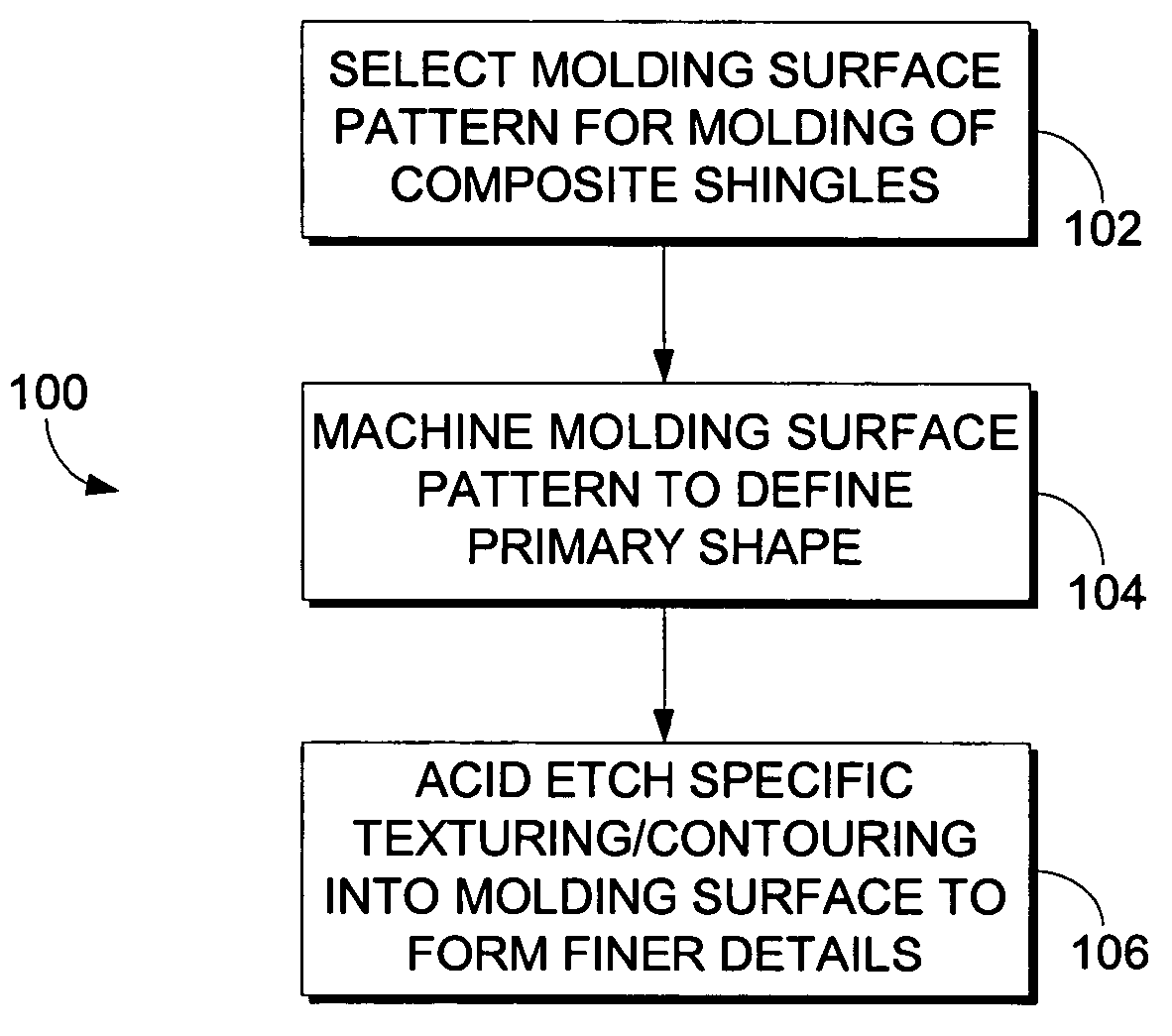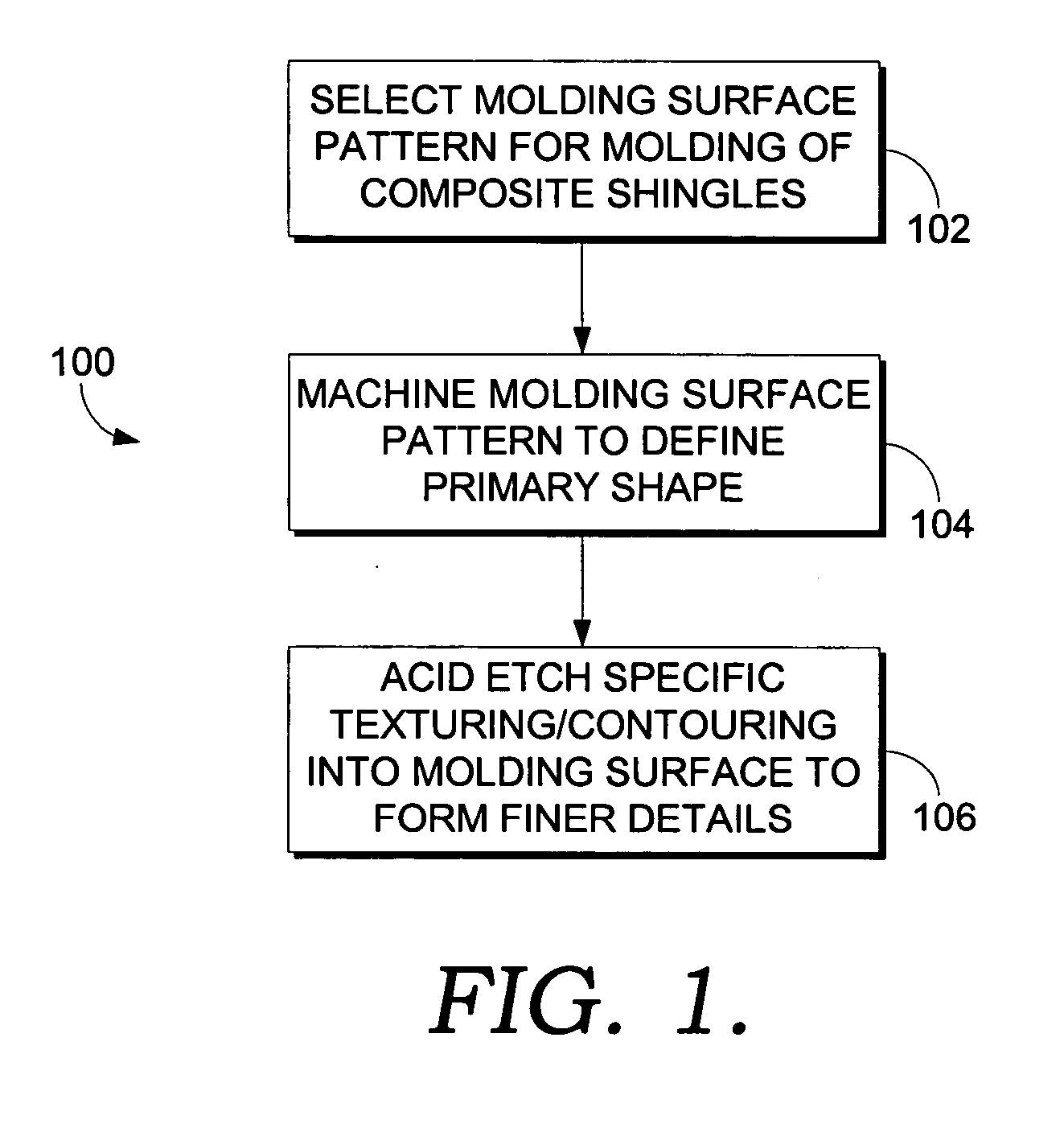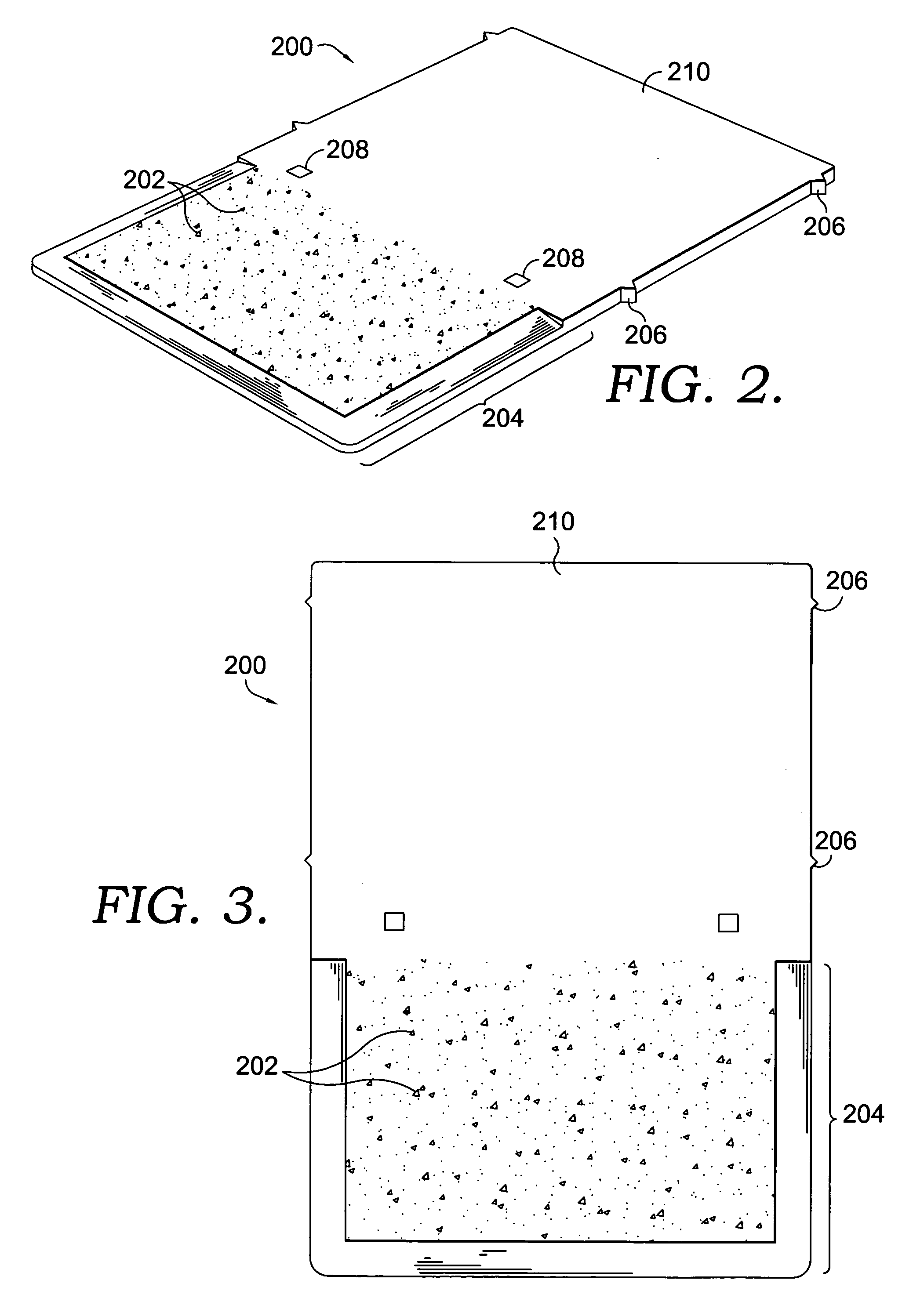Method of forming a molding surface for a shingle mold
a molding surface and mold technology, applied in the field of molding surface for shingle molds, can solve the problems of significant manual labor required to shape a natural piece of slate, relatively heavy and expensive, and also subject to fracture and/or cracking of slate, and achieve the effect of facilitating the manufacture of composite shingles
- Summary
- Abstract
- Description
- Claims
- Application Information
AI Technical Summary
Benefits of technology
Problems solved by technology
Method used
Image
Examples
Embodiment Construction
[0015] Turning now to the drawings, wherein like reference numerals represent like elements, and in particular FIG. 1, there is illustrated a process 100 for forming a molding surface on a base mold used in the manufacture of composite shingles. The base mold may be any type of molding tool or die used in the art for shingle molding, and may be made from a variety of materials. As an example, the base mold may be made out of modified 4140 alloy steel, but those of skill in the art will appreciate that other base mold materials may be selected. Exemplary molding techniques that may be implemented with the base mold include compression and injection molding, but may also include other categories of closed or open molding techniques as a matter of design choice. Additionally, the term “base mold” is not meant to be limited to a specific type of molding tool, and may include male or female molding tools depending on the type of molding technique selected and specific shingle products de...
PUM
| Property | Measurement | Unit |
|---|---|---|
| weight | aaaaa | aaaaa |
| molding | aaaaa | aaaaa |
| perimeter | aaaaa | aaaaa |
Abstract
Description
Claims
Application Information
 Login to View More
Login to View More - R&D
- Intellectual Property
- Life Sciences
- Materials
- Tech Scout
- Unparalleled Data Quality
- Higher Quality Content
- 60% Fewer Hallucinations
Browse by: Latest US Patents, China's latest patents, Technical Efficacy Thesaurus, Application Domain, Technology Topic, Popular Technical Reports.
© 2025 PatSnap. All rights reserved.Legal|Privacy policy|Modern Slavery Act Transparency Statement|Sitemap|About US| Contact US: help@patsnap.com



